My delay in posting updates has caught up with me. As I write this, I've actually just returned to Canada, with the blog about a month behind! But I'm still "processing" what I've seen and what I learned. In the meantime, following are photos and captions of my time in Sri Lanka after closing out India in Pondicherry and Auroville.
Kandy and Newara Eliya
The requisite flight to Sri Lanka lands outside of Columbo, the capital. I stayed at a backpackers hostel in town. I had a general plan to go to the south to find scuba diving and/or ocean windsurfing. Later I would go into the mountains and visit Kandy and the surrounding countryside. But at the hostel, I met Laura who had arranged a car, guide, and tour into the mountains starting the next day. She was kind enough to offer to share the way with me, so off I went (travel flexibility is wonderful :)
 |
| On the first day, we visited the Pinnawala Elephant Orphanage. Here, the elephants are brought down to the river for their daily bath. |
 |
| In the orphanage, making friends with a young orphan. Turns out elephants love a (very hard) scratch behind the ears just as much as cats and dogs. :) |
 |
| Me and Laura beside the herd. |
 |
| We made it to the hill station of Kandy, where we saw fire eaters and other traditional cultural events like this spinning plates performance. |
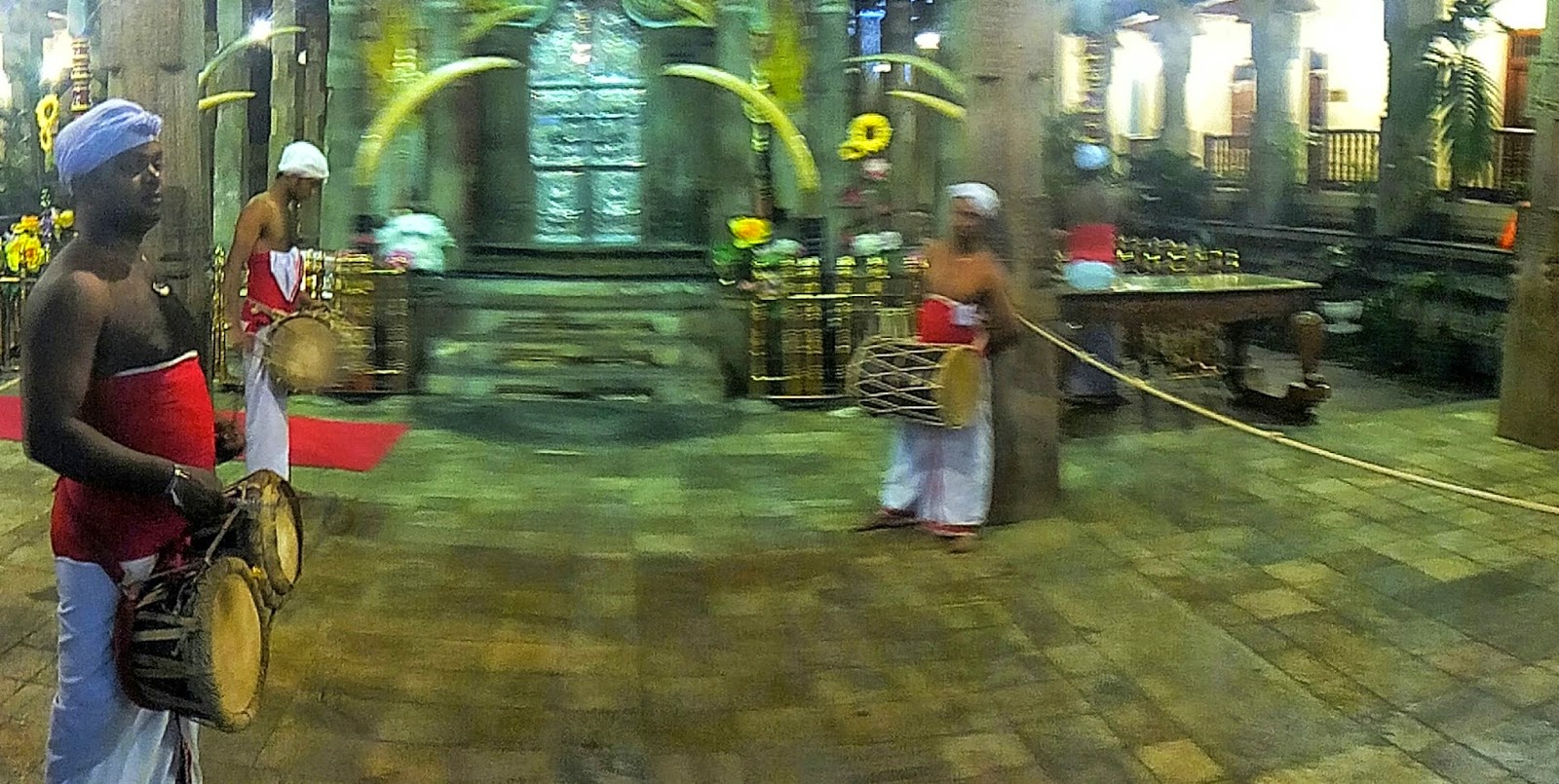 |
| In Kandy at night, we visited the Sri Dalada Maligawa, the "Temple of the Tooth", where the tooth of Gautama Buddha is stored as a relic. Many Sri Lankan Buddhists (the primary 'religion of southern Sri Lanka) come to the temple for the nightly ceremony. Here musicians guard the entrance to the chamber where the tooth is kept. |
|
|
 |
| Also in Kandy we visited the beautiful, expansive botanical gardens. In this photo are Giant Bamboo, an incredibly versatile and useful plant. |
 |
| We went south of Kandy to Nuwara Eliya with the intention of climbing Adam's Peak, but the 2 AM wake up to reach the peak in time for sunrise was too much. As it turned out, it was cloudy that day, but the views were still spectacular. |
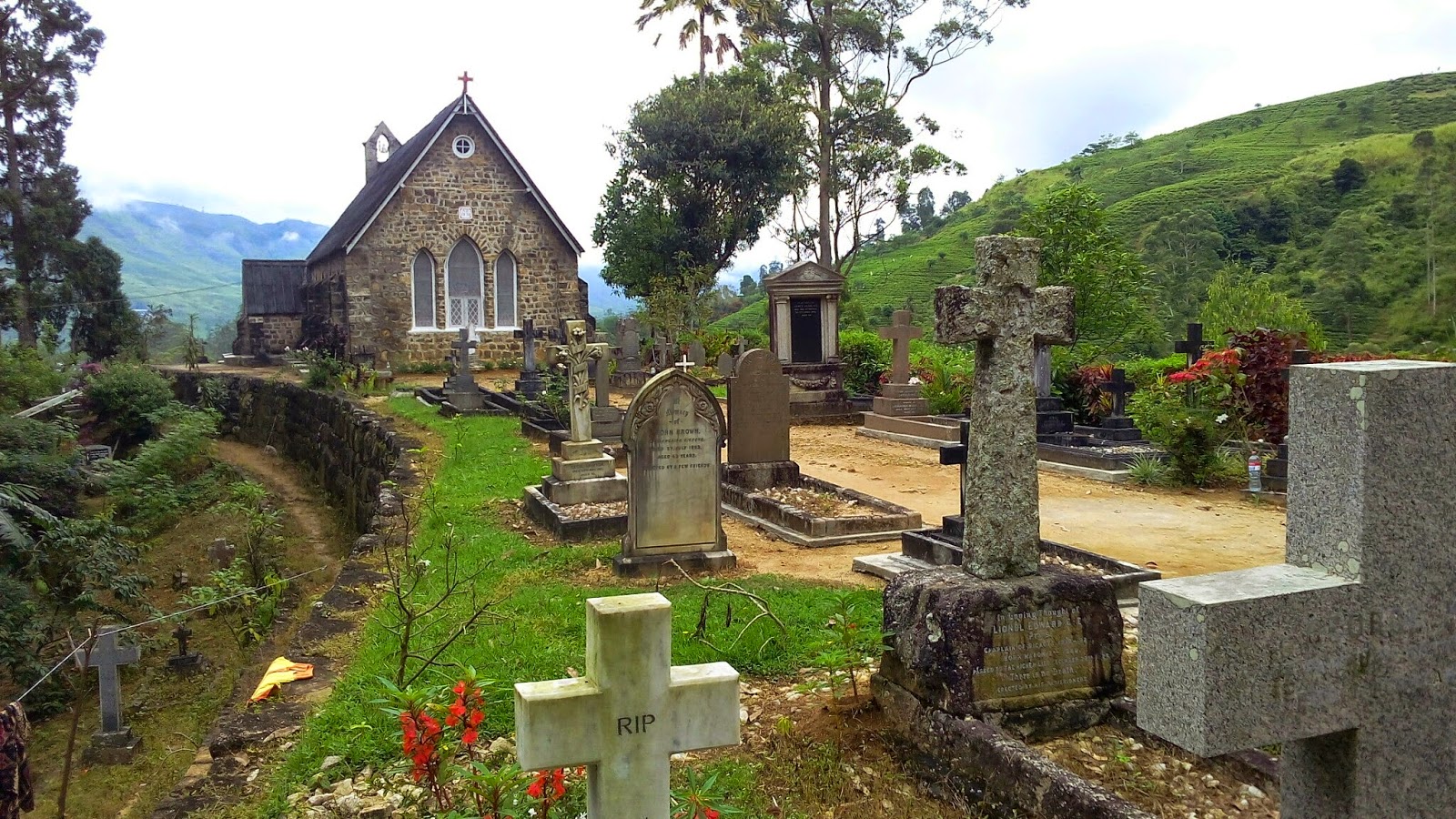 |
| A Christian church on the way back from Nuwara Eliya. |
 |
| Having a fantastic Sri Lankan meal at a small, roadside restaurant. |
Laura was on the most whirlwind trip of anyone I encountered on my travels: after 4 days in Sri Lanka, she was off to Sydney for 4 days in Australia, then Bali for a week! Thanks Laura!!
The Coast
After the mountains, I headed to the southwest coast which was coming into season for clear scuba diving. I came to Unawatuna and stayed at a small hostel run by Bunchy, a super social guy who grew up in Colombo racing cars and bikes and boats.
 |
Bunchy was always offering to make us a local breakfast. I preferred my standard cereal and powdered milk, but the meals were delicious. At night we would have a barbecue, which was fun, but too much meat and ambient smoking for my taste.
In this unrelated photo, I'm cutting fresh coconut. This isn't very interesting, but I just love coconut and it's a big part of Sri Lankan cuisine. Normally it's shredded, soaked and pressed in water to make two thicknesses of coconut juice for cooking. |
 |
| Bunchy arranged for his housekeeper to give a couple of us staying at the hostel a cooking lesson! Here is what we were preparing. The tool to grate coconut was unusual, like a dremel + can opener. |
 |
| Here is a beautiful beach near Unawatuna. You can see the poles where the fishermen sit and catch fish in the local custom, but unfortunately there were none when I was there. |
 |
| Cribbed photo (not mine) of what it looks like when the fishermen are actually on the poles. |
One day I took my rented scooter on an inland trip around Koggala Lake.
 |
| 5 foot monitor on the side of the road. It stayed there in the sun several minutes before slowly moving off into the bushes. |
 |
| Sri Lankan maple syrup! Tapped rubber trees at Kanneliya Forest. :) |
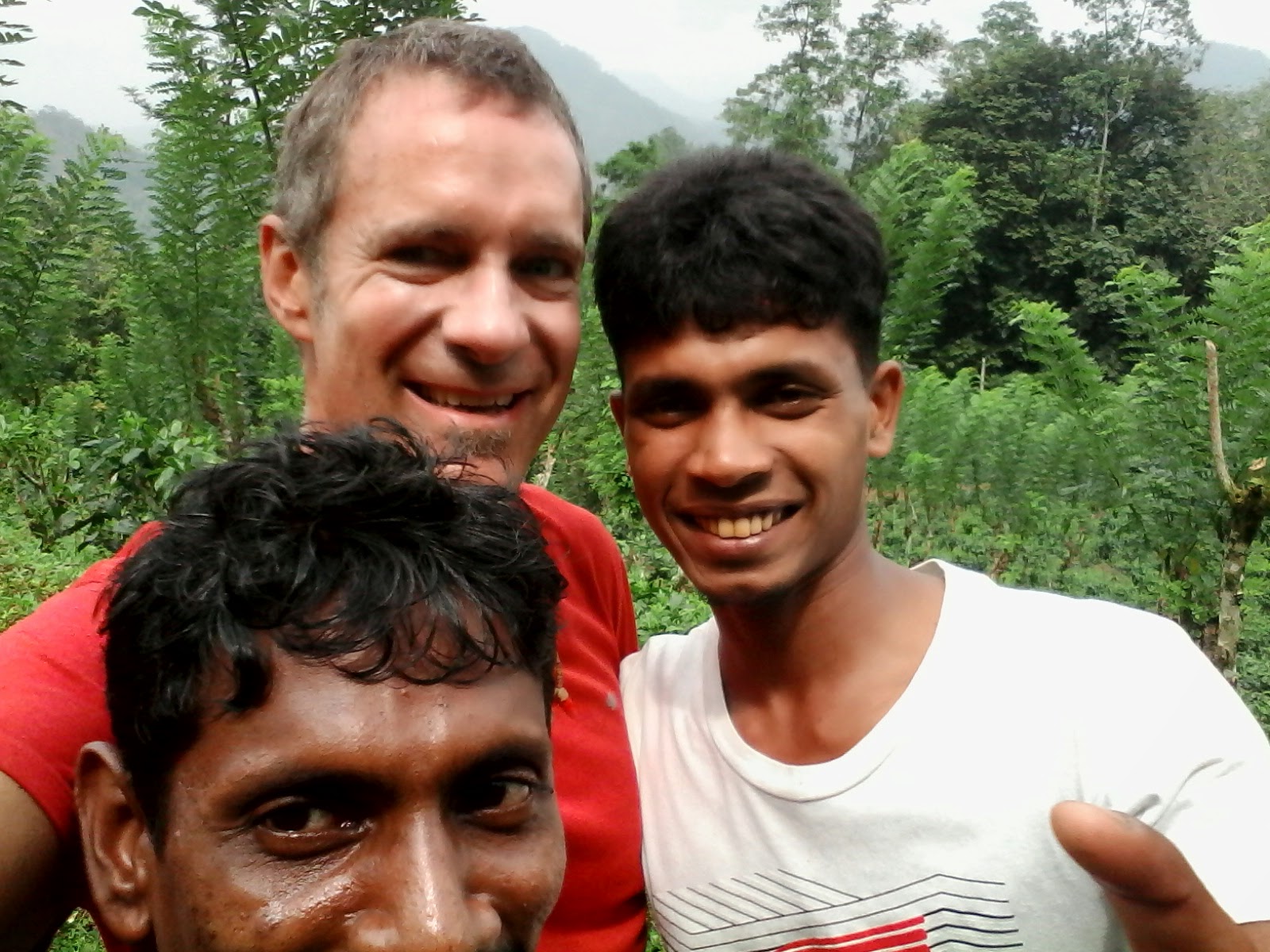 |
| Friends by a tea plantation. |
 |
| Old walking bridge inland from Unawatuna. |
 |
| While in Unawatuna, a world-renown diving spot, I signed up for 4 dives with Pearl Divers. Here I am before my first dive, with my Dive Master. |
 |
Ready to dive!
Another guy at the hostel was an experienced diver and joined me. He proposed a night dive, which Carl and Faye at the dive shop got excited about. It was really exciting - not only do you have to be careful about diving, now you are diving in water you can't see. Everyone gets a flashlight. You're supposed to stay extra close to your "buddy" because you can actually get lost in the dark. If you turn off your light, and wave you arm, the plankton light up momentarily like a kaleidoscope of fireflies.
One day I just snorkeled around the reef near the beach and saw two large sea turtles in about 3 m of water. Fantastic. |
 |
| I had exhausted my desire for partying in Goa, but when in Unawatuna, the club at "Jungle Beach" is the place for techno and raves late into the night. I never came at night, but even in the day the beach pounded with a beat. Not very relaxing for me. |
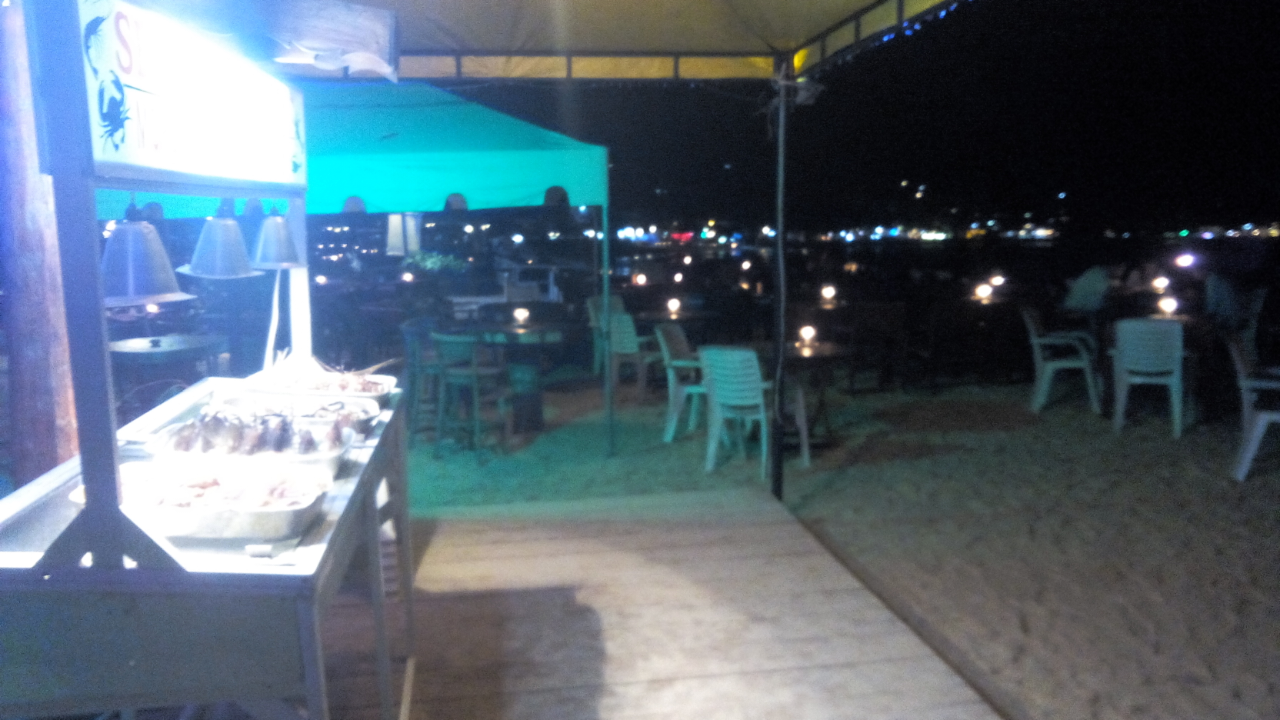 |
| The beach had many beautiful restaurants where you could pick your seafood from a table (at left) and eat by candlelight, the sound of the surf right beside you. |
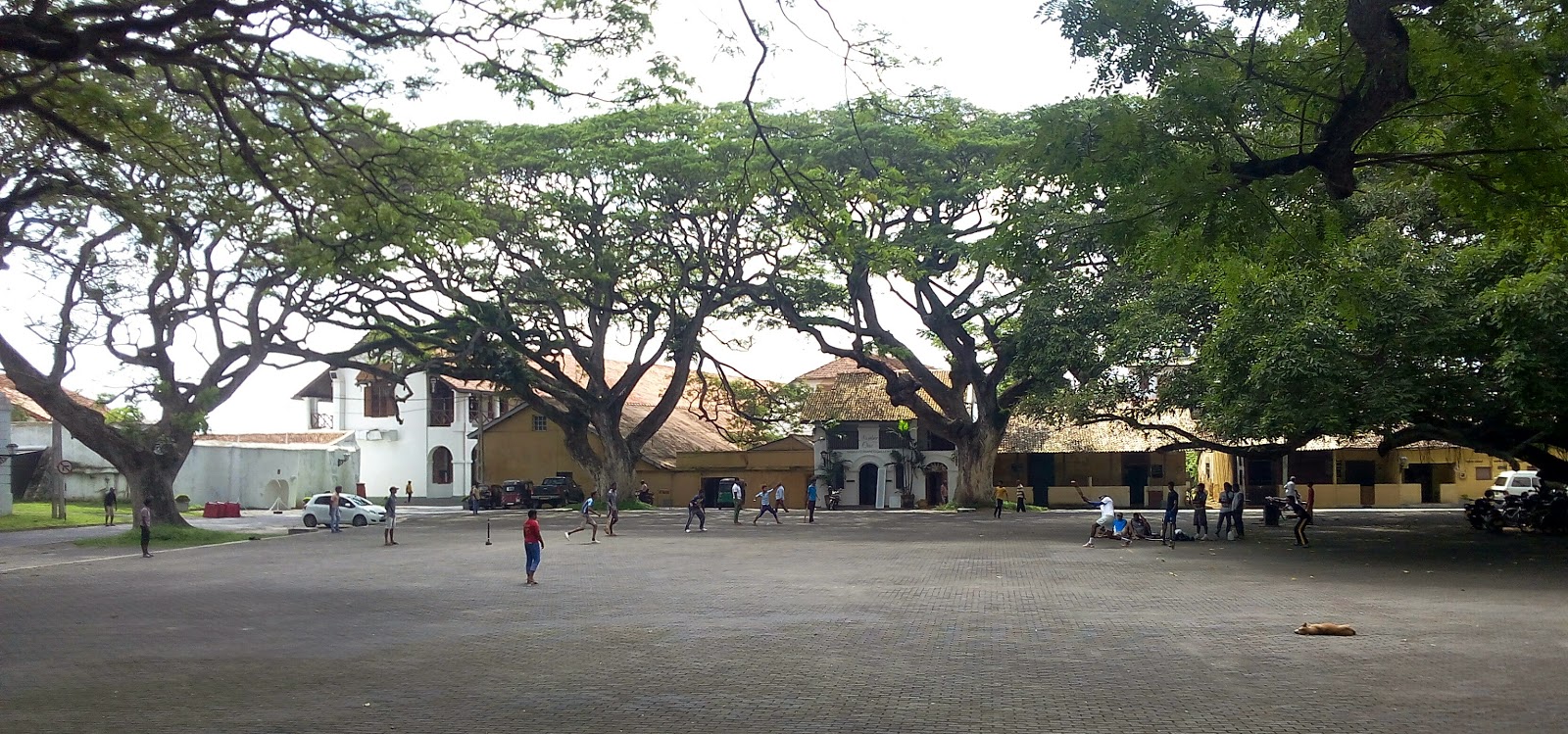 |
| This was a common sight in both Sri Lanka and India: the local boys playing cricket. |
 |
| Me with cucumber - a final, ridiculously open beach at Bentota. |
From here I flew back via Italy for a few weeks of still being a tourist that did not stand-out. From exotic Asian food, I was surrounded by wonderful Italian fare and plenty of dry red wine - fantastic!
I'm still thinking about my overall impressions of my trip. I don't feel compelled to summarize in project-fashion, but I hope to add one more epilogue that closes out the trip and provides some final thoughts.




















